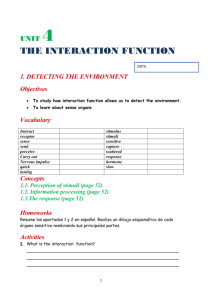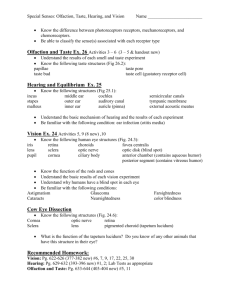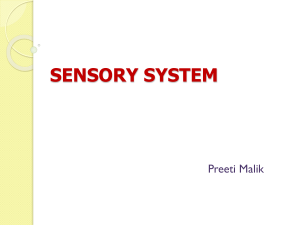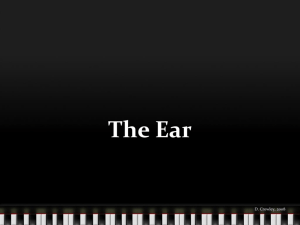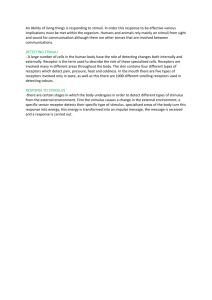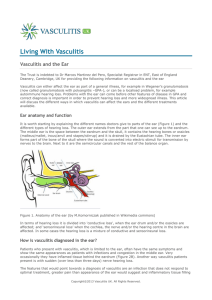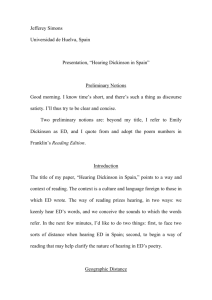Worksheet 2.7 KEY - Iowa State University
advertisement
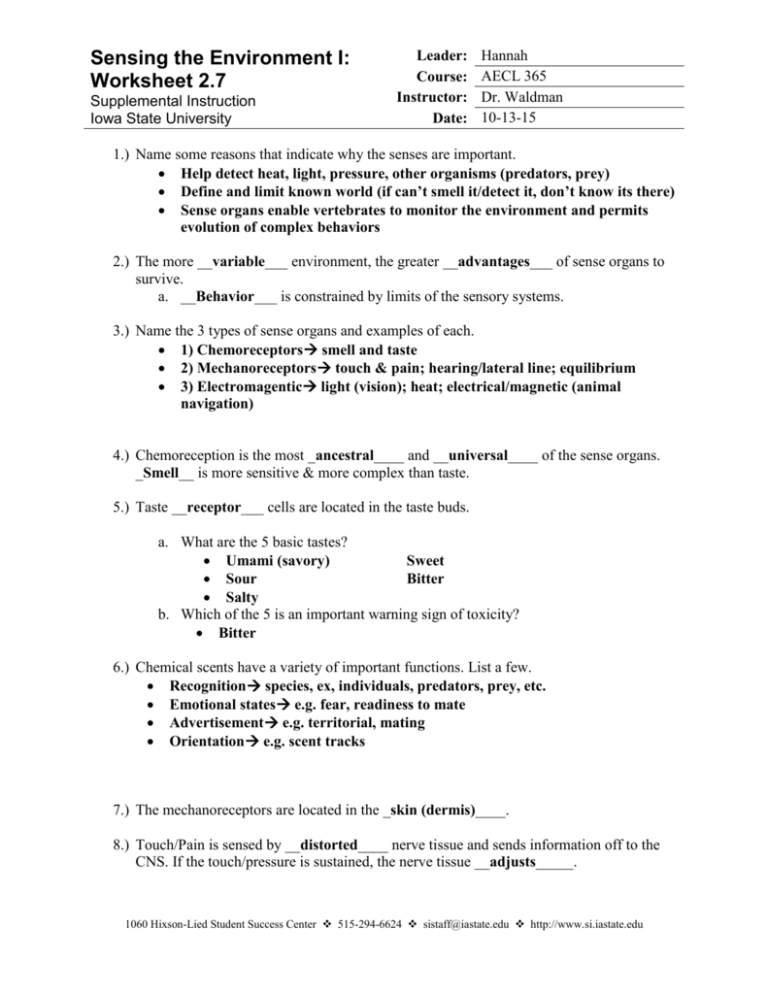
Sensing the Environment I: Worksheet 2.7 Supplemental Instruction Iowa State University Leader: Course: Instructor: Date: Hannah AECL 365 Dr. Waldman 10-13-15 1.) Name some reasons that indicate why the senses are important. Help detect heat, light, pressure, other organisms (predators, prey) Define and limit known world (if can’t smell it/detect it, don’t know its there) Sense organs enable vertebrates to monitor the environment and permits evolution of complex behaviors 2.) The more __variable___ environment, the greater __advantages___ of sense organs to survive. a. __Behavior___ is constrained by limits of the sensory systems. 3.) Name the 3 types of sense organs and examples of each. 1) Chemoreceptors smell and taste 2) Mechanoreceptors touch & pain; hearing/lateral line; equilibrium 3) Electromagentic light (vision); heat; electrical/magnetic (animal navigation) 4.) Chemoreception is the most _ancestral____ and __universal____ of the sense organs. _Smell__ is more sensitive & more complex than taste. 5.) Taste __receptor___ cells are located in the taste buds. a. What are the 5 basic tastes? Umami (savory) Sweet Sour Bitter Salty b. Which of the 5 is an important warning sign of toxicity? Bitter 6.) Chemical scents have a variety of important functions. List a few. Recognition species, ex, individuals, predators, prey, etc. Emotional states e.g. fear, readiness to mate Advertisement e.g. territorial, mating Orientation e.g. scent tracks 7.) The mechanoreceptors are located in the _skin (dermis)____. 8.) Touch/Pain is sensed by __distorted____ nerve tissue and sends information off to the CNS. If the touch/pressure is sustained, the nerve tissue __adjusts_____. 1060 Hixson-Lied Student Success Center 515-294-6624 sistaff@iastate.edu http://www.si.iastate.edu 9.) Explain what a lateral line is and who uses it. What behavior is it important in? Lateral line distant pressure receptor for detecting wave vibrations and currents in water (helps detect nearby movements of prey, predators, mates, or just position of static objects) o Found in fish, frogs, and adult salamanders o Important in fish schooling behavior When water displaced, moves hair cells in the cupula, which are connected to neuromast cells: sends nerve signal to brain 10.) How does the transmission of sound differ in water than in air? In water: o More difficult to initiate (water is more dense than air) o Once initiated, transmission (speed) more rapid (5x) o Speed slows down in colder and deeper waters 11.) Frequency determines the _pitch___ (high or low) while amplitude determines __loudness___ (volume). 12.) The original function of the vertebrate ear was for _balance____. a. The actual organ responsible for this function is called the ___labyrinth____. 13.) Hearing in mammals begins in the middle ear with 3 subdivisions. Name each of these, their function, and their components. Outer ear collects sound waves and take to tympanic membrane (eardrum)—vibrates Middle ear air-filled chamber with 3 bones (malleus, incus, stapes = middle ear ossicles) o Ossicles amplify vibrations (sound) coming from eardrum Inner ear contains the cochlea ( = organ of hearing; filled with liquid and uses hair cells to detect movement) o Receive vibrations from middle ear o Send info to the CNS 14.) In the mammalian inner ear, pitch discrimination depends on the __location__ of hairs stimulated but loudness depends on the __number___ of hairs stimulated. 15.) _Fish__ hear low sounds best. __Mammals____ have the broadest range of hearing while ___birds____ have a very narrow hearing range. 16.) Describe the hearing (ear) specialization in owls. Broad skull helps because further ears are apart, better hearing for distances Asymmetrical ears (in size and position) Sound catching facial disc (brings in sound to ears) o Sound arrives separately to each ear o Serves for directional hearing (can tell which direction sound came from) **Helps for prey location in the dark! 17.) __Sonar/Echolocation____ involves emitting a high frequency sound, which is then bounced back off of prey and objects. This is used for prey location in the dark and or murky waters.




